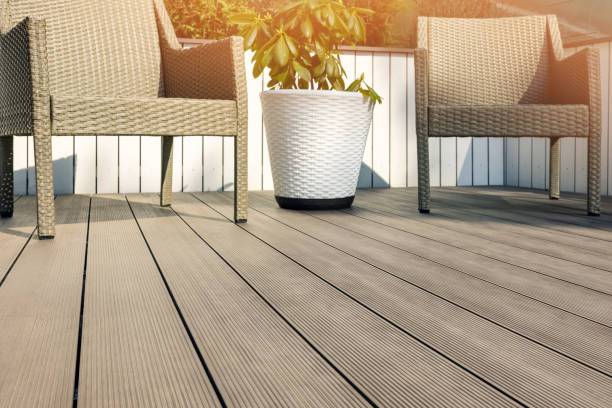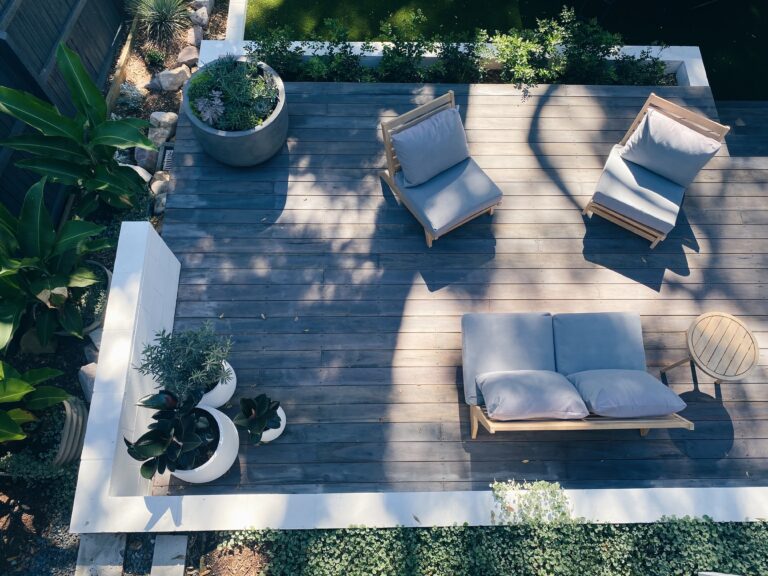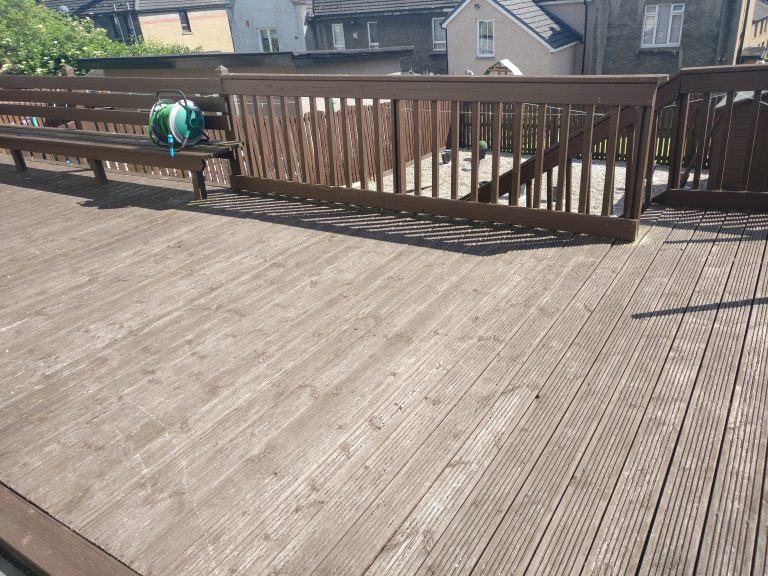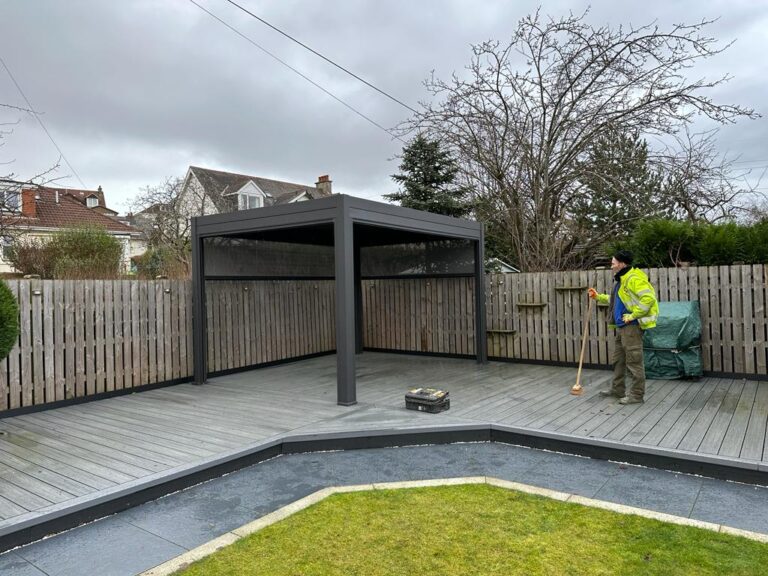Composite decks are a popular choice for homeowners seeking a durable and low-maintenance alternative to traditional wood decks. One common issue that many composite deck owners face is warping. This article will delve into the reasons behind warping in composite decks and provide valuable insights into how to prevent and fix this problem.
From the impact of heat and sunlight to the importance of proper installation and maintenance, we will explore the factors that contribute to warping. We will discuss alternative decking options and their potential benefits. Whether you’re a current composite deck owner or considering a new deck installation, understanding the causes and solutions for warping is essential for maintaining a beautiful and functional outdoor space.
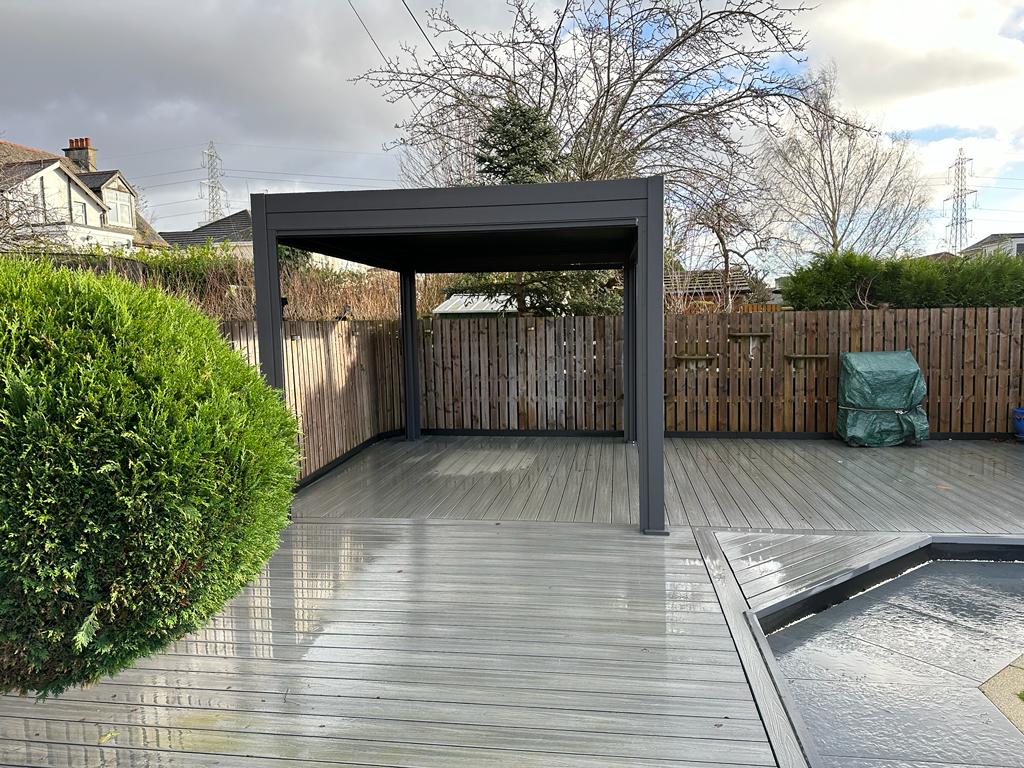
A composite deck is a type of deck made from a mixture of wood and plastic materials.
A composite deck is a type of outdoor flooring constructed from a blend of wood fibres, plastic, and other materials, designed to offer a low-maintenance and durable alternative to traditional wood decks. It provides a versatile and long-lasting surface suitable for various outdoor applications whilst offering resistance to UV exposure and comes with manufacturer guarantees.
The manufacturing process of composite decks involves combining the different materials under high heat and pressure, resulting in a strong and resilient product. When it comes to installation, composite decks can be installed with concealed fixings for a seamless appearance, and they require little to no maintenance compared to wood decks.
To ensure their longevity, regular maintenance, such as cleaning and applying UV protection, is essential to preserve their appearance and structural integrity. Many composite deck manufacturers offer guarantees covering durability and resistance to fading and staining.
What Causes Warping in Composite Decks?
Warping in composite decks can be attributed to various factors such as exposure to weather elements, moisture, temperature fluctuations, excessive weight, and inadequate support during construction and installation. These issues can lead to structural problems and aesthetic concerns, requiring effective solutions to prevent and address warping.
For example, prolonged exposure to sunlight and rain can cause the composite material to expand and contract, leading to warping. Likewise, high levels of moisture absorption can weaken the decking material, making it more susceptible to warping. Fluctuations in temperature, especially extreme variations, can also contribute to the warping of composite decks.
Improper weight distribution and inadequate support systems during installation can put excessive pressure on certain areas, leading to warping over time. Understanding these factors is crucial for maintaining the longevity and stability of composite decks.
Exposure to Heat and Sunlight
Excessive exposure to heat and sunlight can significantly contribute to the warping of composite decks, as prolonged UV exposure and temperature fluctuations can degrade the material over time, leading to structural issues and discolouration. Preventative maintenance tips and protective measures are crucial in addressing this issue.
Regularly applying a weather-resistant protective coating can help preserve the integrity of composite decks by shielding them from the harmful effects of sunlight and UV rays. It’s essential to keep the deck clean and free from debris, as trapped moisture can exacerbate the impact of heat and UV exposure.
Periodic inspections for signs of wear and tear, along with timely repairs, can prolong the lifespan of composite decks in outdoor environments.
Improper Installation
Improper installation practices, including inadequate support structures and incorrect fastening techniques, can contribute to the warping of composite decks, resulting in structural integrity issues and aesthetic concerns. Addressing installation problems and implementing proper support measures are essential for preventing warping.
This can be achieved by ensuring that the support structures, such as joists and beams, are designed and installed according to the manufacturer’s specifications to provide adequate and uniform support for the composite decking material. Using appropriate fastening techniques, such as hidden fasteners or specially designed screws, can help distribute the weight evenly and minimise the risk of warping.
Regular maintenance, such as cleaning and sealing, is also crucial for preserving the structural integrity and appearance of composite decks, especially in challenging environmental conditions. By addressing installation-related issues and adhering to proper maintenance practices, homeowners can enjoy long-lasting, visually appealing composite deck structures.
Moisture and Humidity
Moisture and humidity can lead to warping in composite decks, as excessive moisture absorption and environmental humidity levels can cause the material to swell, warp and deteriorate over time. Effective prevention, regular cleaning and protective measures play a vital role in mitigating these issues.
Regular cleaning is essential to remove any build-up of organic matter, which can trap moisture and promote mould and mildew growth. Applying a protective sealant can help create a barrier against moisture absorption and UV damage. It’s important to inspect the deck regularly for signs of warping or deterioration and take timely action to address any issues.
By following these maintenance tips, homeowners can ensure the longevity and durability of their composite decks in humid environments.
Heavy Weight and Pressure
Excessive weight and pressure, especially in areas with inadequate material support or improper construction, can lead to warping in composite decks, potentially causing structural damage and safety hazards. Identifying and addressing these issues through repair and construction adjustments are essential for preventing warping.
This emphasises the importance of ensuring that the decking material is properly supported and constructed. It’s crucial to have a solid foundation and use materials designed to withstand heavy weight and pressure. When facing construction problems, it’s vital to address them promptly to maintain the structural integrity of the deck.
By focusing on these aspects, homeowners can ensure the longevity and durability of their composite decks while minimising the risk of warping and associated safety concerns.
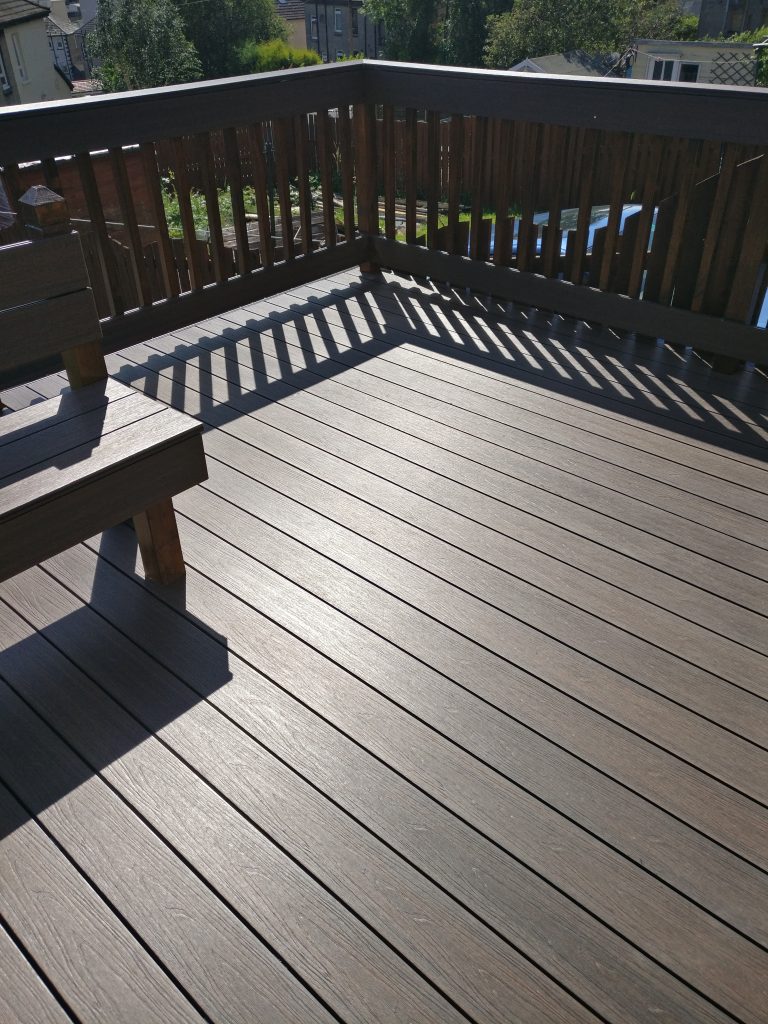
How to Prevent Warping in Composite Decks?
Preventing warping in composite decks involves proactive maintenance practices, regular cleaning, and protective measures to mitigate the impact of weather, moisture, and other contributing factors. Implementing suitable prevention strategies and care routines is crucial for preserving the integrity and appearance of composite decks.
Regularly inspecting the deck for signs of wear, such as fading or discolouration, and addressing any issues promptly can significantly contribute to its longevity. Using protective coatings or sealants can provide an extra layer of defence against the elements. It’s also important to follow manufacturer’s maintenance tips and recommendations for cleaning products to avoid potential damage.
By staying proactive and consistent with maintenance, composite decks can maintain their beauty and structural integrity for years to come.
Proper Installation
Ensuring proper installation practices, including adequate support structures, correct fastening methods, and attention to construction details, is essential in preventing warping in composite decks. Addressing installation problems and implementing suitable solutions are crucial for long-term structural integrity.
It is imperative to provide strong foundational support for the composite deck to distribute the weight evenly and minimise the risk of warping. Attention to construction details, such as proper spacing and fastening, plays a vital role in preventing issues.
Common installation problems, such as uneven joist spacing and improper ventilation, can lead to warping if not addressed. Utilising construction solutions such as adjustable support jacks and proper ventilation systems can help rectify these issues and maintain the structural integrity of the composite deck over time.
Regular Cleaning and Maintenance
Regular cleaning and maintenance routines play a vital role in preventing warping in composite decks, as they help remove debris, prevent moisture build-up, and maintain the material’s integrity.
This involves periodic sweeping and gentle washing to keep the surface free from dirt and grime, as well as promptly addressing any spills or stains, which can contribute to deterioration. Applying protective sealants or finishes can further enhance the deck’s resilience against the elements.
Inspecting for signs of wear and tear and addressing them promptly is crucial for the longevity of the deck. By following these maintenance tips, homeowners can ensure that their composite deck remains in top condition for years to come.
Use of Protective Coatings
Applying protective coatings designed to resist UV exposure, moisture, and environmental factors can significantly contribute to preventing warping in composite decks. These coatings enhance the material’s durability and provide an additional layer of protection, extending the deck’s lifespan and structural integrity.
They also play a crucial role in preserving the deck’s original aesthetic appeal, preventing discolouration and weathering caused by sun exposure and moisture. These protective measures reduce the need for frequent maintenance, saving both time and costs for homeowners.
By creating a barrier against harmful elements, protective coatings ensure that the composite deck remains in top condition, offering long-term benefits for homeowners in terms of both functionality and visual appeal.
Can Warping be Fixed in Composite Decks?
Addressing warping in composite decks is possible through repair and maintenance techniques, such as replacing warped boards and implementing refinishing practices. Identifying and addressing warping issues promptly is essential for preserving the decking’s structural integrity and aesthetic appeal.
Swift resolution of warping problems not only helps in maintaining the decking’s functionality but also prevents the issue from escalating. When a board becomes warped, it is crucial to replace it promptly to prevent further damage to the surrounding boards.
Refinishing the decking can also help in restoring its original appearance and protecting it from future warping. Understanding the importance of structural maintenance can help homeowners in developing a proactive approach towards restoration and long-term care for their composite decks.
Replacing Warped Boards
Replacing warped boards in composite decks involves identifying the affected areas, removing the damaged sections, and installing new boards to restore the deck’s structural integrity and aesthetic appeal. Adhering to proper replacement procedures and suitable material selection is essential for effective repair.
This restoration process is crucial for the long-term durability and beauty of the deck. When selecting replacement boards, it’s important to consider the material’s compatibility with the existing composite structure to ensure uniformity. Integrating proper restoration techniques not only enhances the deck’s appearance but also contributes to its overall structural maintenance. By following these principles, homeowners can ensure that their composite decks remain resilient and visually appealing for years to come.
Sanding and Refinishing
Sanding and refinishing warped sections of composite decks can help restore the material’s surface integrity and aesthetic appeal, effectively addressing warping issues. Implementing proper refinishing practices and suitable restoration techniques is crucial for preserving the deck’s appearance and functionality.
This process involves carefully sanding down the warped sections to level the surface and remove any imperfections. Once the sanding is complete, it’s essential to apply a high-quality composite deck stain or sealant to protect the material from future warping and ensure long-lasting structural maintenance. By following these steps, homeowners can revitalise their composite decks, enhancing their durability and extending their lifespan.
What are the Alternatives to Composite Decks?
Whilst composite decks offer numerous benefits, alternative decking options such as natural wood decks, PVC decks, and aluminium decks provide distinct features and material properties that cater to different aesthetic preferences, durability requirements, and maintenance considerations.
For those who appreciate the timeless beauty of natural wood, natural wood decks are an ideal choice. They offer a warm, organic aesthetic and can be stained or painted to achieve the desired look. On the other hand, PVC decks are known for their exceptional durability and low maintenance, making them perfect for high-traffic areas.
Meanwhile, aluminium decks stand out for their lightweight yet sturdy nature, as well as their resistance to rust and corrosion, making them suitable for coastal applications. Each alternative decking option complements various outdoor settings and personal preferences.
Natural Wood Decks
Natural wood decks offer a classic and visually appealing alternative to composite decks, showcasing unique material aesthetics, natural textures, and versatile finishing options. They may require more extensive maintenance and are susceptible to weather-related deterioration.
Despite their maintenance needs, natural wood decks have gained popularity due to their authentic beauty and natural warmth, which can enhance the overall appeal of outdoor living spaces. The grain patterns, colours, and natural variations in wood provide a distinct charm that is hard to replicate with composite materials.
It’s important to note that regular maintenance, including staining, sealing, and occasional repairs, is critical to preserving the wood’s integrity and longevity, especially in harsh weather conditions.
PVC Decks
PVC decks present a durable and low-maintenance alternative to composite decks, offering exceptional moisture resistance, colour retention, and structural integrity. Their versatile design options and long-term durability make them a compelling choice for outdoor applications.
In addition to their longevity, PVC decks require minimal upkeep, as they resist staining, scratching, and fading over time. Their material properties also make them highly resistant to mould and mildew, ensuring a deck that remains pristine with minimal effort. This makes them an ideal choice for homeowners seeking a low-maintenance outdoor living space that retains its aesthetic appeal.
The structural integrity of PVC decks further enhances their reliability, providing peace of mind for years to come.
Aluminium Decks
Aluminium decks offer a lightweight and corrosion-resistant alternative to composite decks, showcasing exceptional longevity, design versatility, and minimal maintenance requirements. Their structural stability and weather resilience make them a practical choice for outdoor environments.
The material properties of aluminium, such as its high strength-to-weight ratio, contribute to its structural stability, allowing for longer spans and reduced substructure requirements. Aluminium decks are highly resistant to weather, ensuring they maintain their appearance and integrity in various climates. This weather resilience, coupled with the material’s corrosion resistance, makes aluminium decking a long-term, low-maintenance solution for outdoor living spaces.

